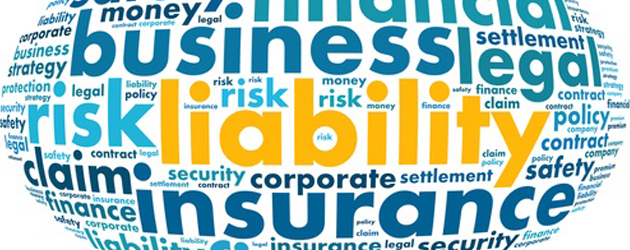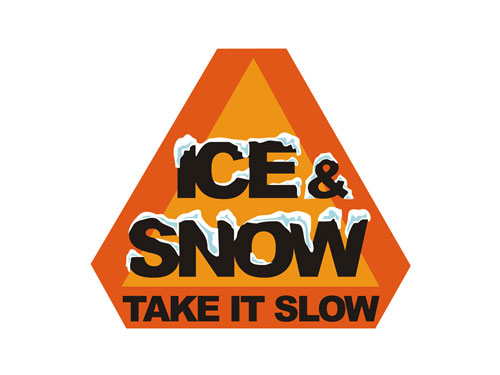
by Flagship Staff | Sep 26, 2016 | Blog
The commercial general liability (CGL) coverage form has a “who is an insured” section in which it describes “an insured” to whom the provisions of the CGL form apply.
However, that section does not deal with entities known as “additional insureds,” those that are added as insureds to the CGL form by way of endorsements.
In today’s business world, a company is often asked (or required) to put another entity on its commercial general liability coverage form as an additional insured. This is usually done by issuing an endorsement to the CGL form, adding the other entity as an insured. The endorsement can be fine-tuned to a specific entity or can be a blanket additional insured endorsement. Furthermore, the wording of the additional insured endorsement can be simple or more complex.
Legal and financial consequences
But regardless of the length or format of an additional insured endorsement, the insured and the insurer should realize that a decision to make some entity an additional insured on a general liability policy should not be dismissed as just a simple business decision that has no real consequences. There can be legal and financial consequences arising from that decision
As an example, if the insurer is going to provide liability coverage for an additional insured through an endorsement to a CGL form, the insurer must also live up to the duty to defend. After all, the insurer states that it has “the right and duty to defend the insured against any suit seeking … damages.” This statement obviously includes an additional insured within its scope. However, the duty to defend is limited by the declaration that “we will have no duty to defend the insured against any suit seeking damages … to which this insurance does not apply.”
So, for example, if an exclusion on the CGL form clearly applies to the named insured and the additional insured, there is no duty to defend on the part of the insurer. If, however, an exclusion applies solely to the named insured, the policy should still apply to the additional insured.
Some insurers will argue that unless the named insured has coverage, the additional insured has no coverage. What the insurers fail to understand is that the policy applies separately to each insured against whom a claim is made or suit is brought (the separation of insureds clause).
Who’s covered?
Disputes over whether the insurer has to indemnify and defend the additional insured can arise when there is a lack of clarity in the wording of the additional insured endorsement.
For example, some additional insured endorsements still make the designated entity an insured for liability “arising out of” the product, work or operations. This phrase can cause coverage disputes, with some reading the phrase very narrowly, limiting an additional insured’s role as an insured only to vicarious liability — that is, no coverage for any negligence of the additional insured that is independent of the activities of the named insured. Put another way, the liability of the additional insured flows only from the liability of the named insured.
Coverage for additional insureds depends on the wording in the endorsement and can be subject to different interpretations if it is not specific.
Others would say “arising out of” deserves a broader interpretation — so broad that the additional insured’s own activities could lead to liability coverage under the named insured’s CGL form. Therefore, if the activities of the additional insured (instead of the named insured) cause injury to someone, the named insured’s CGL form will apply to a claim as long as there is some connection between the additional insured’s activities and the named insured’s operations or premises.
Because of the differences in interpreting “arising out of,” the insurance services office (ISO) amended the language in some of the current additional insured endorsements. The phrase “arising out of” was dropped and replaced with language limiting coverage for the additional insured to bodily injury and property damage “caused in whole or in part by your (the named insured) acts or omissions.”
Thus, the form attempts to eliminate coverage for an additional insured’s sole negligence, in that unless the named insured is responsible in whole or in part for resulting injury or damage, the additional insured has no coverage. (Of course, with this wording, namely, in whole or in part, if the additional insured can show that the named insured is at least one percent at fault, the additional insured may have coverage, regardless of how much of the fault rests with the additional insured.)
‘Your work’
Another consideration when it comes to defending additional insureds can arise if the additional insured endorsement uses the phrase “your work.” Since this term is used in a completed operations context in the CGL form, an intent by the insurer to limit coverage and defense for additional insureds to ongoing operations can be disregarded by a court.
Current ISO additional insured endorsements do use the phrase “in the performance of your ongoing operations” in order to clarify the extent of coverage for the additional insured. However, note that it is possible in some fact patterns to argue that coverage still applies after the work has been completed. The reason is that the trigger of coverage can be interpreted by courts as when the time liability occurs (that is, the negligent act), and not the time when injury or damage occurs.
Conflicts interests
Finally, the additional insured may have direct access to the named insured’s policy. The additional insured can turn claims arising from its activities directly over to the insurer without consulting the named insured and seek defense coverage. Moreover, in such a situation as well as others, the additional insured and the named insured could end up being involved in the same claim. This would require the insurer to provide separate defense strategies and counsels if the interest of the additional insured and the named insured conflict.
These are just a few of the many points to consider when entertaining a request to put an additional insured on the general liability policy. It has to be more than just a routine business

by Flagship Staff | Sep 19, 2016 | Blog
Interest in cyber coverage is at an all-time high, and those who previously thought it a luxury — or not a necessity — are taking a much closer look at their exposures.
1. Brute force attack
A very sophisticated software or algorithm which is written to do whatever it can to attack your system — by searching for vulnerabilities — and in many cases, attacks a password-protection mechanism.
The brute force attack will use a specially designed software to go through hundreds of thousands of different words, combinations of words and numbers to try to crack your password, They will even go through every word in the dictionary to see if they can access something like a password.
2. Social engineering/cyber fraud
If you’re in the treasury department, and I send you an e-mail that looks like it’s coming from the CEO or CFO requesting that you ‘wire funds on the merger acquisition that we have pending, I would like that money wired today — this is your authorization to get it done,’ whoever is working in that accounting or treasury department will wire the money.
They’re not attacking your system, they’re attacking individuals, and the company’s wire-transfer policies and procedures: We’re seeing a prevalence of that today, and that’s significant because the losses tend to be in seven figures. This type of attack doesn’t target data, it targets the money and once it’s transferred it’s unlikely that you’re able to retrieve that money.
3. Distributed Denial of Service attack (DDoS)
This happens when a server is overloaded with connections, with a goal of ultimately shutting down the target’s website or network system. This is just where [hackers] are overloading your system, hoping it will shut down your network and you will not be able to operate your business.
4. Phishing attacks
Phishing is perhaps the most commonly reported form of cyber attack and keeping up with the methods of some phishing attacks is proving to be very difficult.
There are various types of phishing attacks and the type that is used usually depends on the industry. Hackers send out hundreds of thousands of emails [with an attachment or link] hoping that someone will click on them, that’s the hacker’s means to access your system. Once you open it, you’re giving them access to your computer system and the information on it.
Once they’re in, then they’re able to really attack the software’s vulnerabilities, whether it’s personal passwords, firewall or lack thereof, or unpatched status security software.
5. Malware, spyware, ransomware
Each of these types of attack has its own objectives. Any one of those is an attack on your software, your systems, your theft prevention software — getting access through any one of the malware type of attacks.
It’s basically a malicious software with the intent to gain unauthorized access and that could include viruses, spyware and more recently, we’ve see ransomware where they’ll lock down your system and essentially say ‘we have your data, if you want it back you’re going to pay a ransom and we’ll let you gain access back to your information.’ There are also Trojan horses and key loggers that track keystrokes to gain access to passwords or gain access to your system.
If the malware is introduced into your system, it will cause the intended damage, and that intended damage could be erasing all the information contained on your hardware.
Other types of malware target individuals who probably aren’t with the IT department and may not have the same level of sophistication or even paying attention, he noted. You’re busy, you get an email, you don’t pay much attention to who it’s from or if it’s an accurate email address, you click and allow them access to your system. It’s as simple as that. Whether it’s a link or an attachment, you basically provide that malware into your system, which will then accomplish whatever the objective is.
As for spyware, hackers introduce a software into your system that looks for the simplest form to track keystrokes to get passwords or electronically spy on your network, whether to gain access to confidential information or spying in order to gain access to unidentifiable information.
A “worm” is similar to a virus but it spreads differently. In order to affect your files, a worm eats into your system and runs on its own. If a worm is introduced into your system, it could replicate by resending itself from your system to everyone in your contacts list; so one person lets it in and then it just compounds itself; depending on how it’s written, it could get back to every contact on your list.

by Flagship Staff | Sep 13, 2016 | Blog
10. Repetitive motions involving micro-tasks
This category represents 2.9% of the total and amounts to $1.82 billion.
Some of these tasks may include a word processor who looks from the computer monitor to a document and back several times a day or the cashier at the local grocery store who is scanning and bagging groceries for several hours at a time.
9. Struck against object or equipment
This category of workplace injury applies to workers who are hurt by forcible contact or impact, for example, an office worker who bumps into a filing cabinet or an assembly line worker who stubs a toe on stacked parts.
These injuries account for 3% of the total and $1.85 billion
8. Caught in or compressed by equipment or objects
Amounting to 3.2%, or $1.97 billion, these workplace injuries result from workers being caught in equipment or machinery that’s still running as well as in rolling, shifting or sliding objects.
Picture the scene in a movie in which wine barrels topple over, catching the bad guy beneath them, only in this case, it’s the employee whose job it may be to stack the barrels. Perhaps it’s the experienced worker who removes a machine guard to dislodge material that’s stuck and gets a finger caught when the machine starts moving again.
7. Slip or trip without fall
Occasionally, workers do slip or trip without hitting the ground. Think of the employee entering the workplace who slips on icy stairs but is able to grab the handrail to prevent hitting the ground. But the action of grabbing the handrail may cause the employee to injure his shoulder or wrench her knee.
Injuries in this category are 3.8% of the total and cost $2.35 billion.
6. Roadway incidents involving motorized land vehicle
Accounting for 4.8% of injuries at a cost of $2.96 billion are motor vehicle accidents.
The worker may be the driver, a passenger or a pedestrian, but the cause of the injury is an automobile, truck or motorcycle.
5. Other exertions or bodily reactions
These motions include bending, crawling, reaching, twisting, climbing or stepping, according to the BLS. Consider, for example, a roofing contractor’s employees who are continually climbing up and down ladders.
These injuries are 6.7% of the total, amounting to $4.15 billion.
4. Struck by object or equipment
This category covers a range of possible injuries, from being struck by an object dropped by a fellow worker to being caught in a swinging door or gate. Picture the construction worker on a scaffold dropping a hammer on the worker below.
These injuries account for $5.31 billion in costs, 8.6% of the total.
3. Falls to lower level
The roofer could fall to the ground from the roof or ladder, or an office worker standing on a stepstool, reaching for a heavy file box, could fall to the floor.
These injuries are 8.7% of the total, costing employers $5.40 billion
2. Falls on same level
The second most costly workplace injury, surprisingly, is a fall on the same level. Picture the employee who is walking through the office and falls over an uneven floor surface or someone leaning too far back in an office chair and toppling over.
These injuries, costing $10.17 billion, are 16.4% of the total.
1. Overexertion involving an outside source
According to the data, this category ranked at the top of the leading causes of disabling injury, with costs reaching $15.08 billion, and almost a quarter of the total (24.4%).
The BLS explains that overexertion occurs when the physical effort of a worker who lifts, pulls, pushes, holds, carries, wields or throws an object results in an injury.
The object being handled is often heavier than the weight that a worker should be handling or the object is handled improperly. For example, lifting from a shelf that’s too high, or in a space that’s cramped.
Within the broad category of sprains, strains, and tears caused by overexertion, most incidents resulted specifically from overexertion in lifting.
by Flagship Staff | Jul 29, 2016 | Blog
Summer is officially here! Unfortunately, for teen drivers, this is the deadliest time of year.
More teens are now on the road going to their summer jobs, visiting friends, and travelling to summer attractions. This means more cars driven by inexperienced drivers.
Here are a few reasons why summer is more dangerous for teen drivers:
1.Inexperience. Instead of going back and forth to school, teen drivers are spending more time cruising around. Unfortunately, their lack of experience makes them unable to recognize hazardous situations and underestimate dangerous situations.
2.Increased road congestion. Road congestion increases significantly this time of year. Orange construction barrels litter our roadways. In addition, families are making their annual vacation treks. This extra congestion can lead to erratic driving, road rage, and sudden stops.
3.Distracted driving. Obviously, texting and driving is dangerous. So is loud music and conversations with friends.
4.More likely to engage in risky behaviors. Driving with a car full of friends not only causes drivers to become more easily distracted, they may also feel pressured to participate in risky behaviors.
5.More time is spent driving at night. According to the National Safety Council, vehicle death rates at night are three times higher than during the day. Later curfews make for more cruising time on potentially unfamiliar roads. Adding darkness to the mix could cause them to underestimate a curve or run a stop sign. In addition, darting animals could cause them to swerve out of control. Lastly, they could be sharing the road with drunk drivers or drivers falling asleep at the wheel.
Tips for keeping your teen driver safe:
1.Seatbelts save lives. I’m amazed at the number of fatal accidents in the last few months in which occupants weren’t wearing seatbelts. Wearing a seatbelt is a basic concept. According to the CDC, people who wear seatbelts cut their chances of being seriously injured or killed in a crash in half. Every time I hear about an accident in which a fatality occurred because of an ejection, I tell my kids about it and explain how important a seatbelt is.
2.Talk to them about warning lights. Again, as cars become smarter, more systems are being monitored. Go through your owner’s manual and explain to your child what each warning light means. Pay particular attention to tire pressure. Underinflated tires are more dangerous than overinflated.
3.Educate your kids on different driving conditions. Did you know you shouldn’t use cruise control in the rain? Do you know what to do if your vehicle hydroplanes? If you don’t know the answers to these questions, how can you expect your kids to know? Cruise control shouldn’t be used in rainy conditions because it could cause your car’s tires to lose contact with the pavement. For detailed information on how to avoid and handle hydroplaning, check out my blog, “Eleven tips to avoid or handle hydroplaning.”
4.Make sure headlights work properly. Headlights should be properly adjusted for nighttime driving. In addition, the headlight lenses should be clear of debris. If your lense covers are cloudy and it’s difficult for light to pass through, clean them or order new ones.
5.Make sure your teen’s car has good tires. Tires are the most important part of your car. We rely on four tires with a contact patch the size of our hands to keep us travelling down the road safely. So keeping your tires in good shape is important!
6.Limit the number of friends in the car.
7.Establish open communication. If your teen is going to a party that may involve underage drinking, have an honest conversation and share your expectations. While you don’t want to condone underage drinking, you shouldn’t pretend it doesn’t exist. Let them know it’s okay to call you for a ride home. Mixing alcohol and driving can be a deadly combination, especially with inexperienced drivers.
8.Don’t let your teens drive if they’re not in good physical or mental condition. If your teen works a late shift and is too tired to drive, make alternative plans. If your teen is upset over a break up or a fight with a friend, consider doing the driving.
9.Drive the speed limit. Encourage your teen drivers to drive the speed limit. While speeding could get them to their destinations a few minutes faster, is it really worth the increased risk and the potential speeding ticket? Probably not. How many times has a car passed you and a few minutes later you see it just in front of you at an exit ramp or stop light?

by Flagship Staff | Jan 12, 2016 | Blog
 Identify the type of braking system on your car. ABS brakes require that you press firmly on the brake pedal and not let off in slippery conditions (rain or snow). They prevent your wheels from locking in emergency situations. Standard brakes, on the other hand, require you to pump the pedal to prevent tire lockup. Regardless of the braking system on your car, you never want to lock the wheels when braking because this will cause you to lose the ability to steer the car.
Identify the type of braking system on your car. ABS brakes require that you press firmly on the brake pedal and not let off in slippery conditions (rain or snow). They prevent your wheels from locking in emergency situations. Standard brakes, on the other hand, require you to pump the pedal to prevent tire lockup. Regardless of the braking system on your car, you never want to lock the wheels when braking because this will cause you to lose the ability to steer the car.
Keep a safe following distance. Experts recommend keeping a safe following distance of 8 to 10 seconds. A car traveling at 60mph covers 88 feet per second, so it can take a car traveling on wet or snow-covered roads 6 to 10 seconds and more than 500 feet to stop.
Avoid using cruise control on snow, ice, or water. While cruise control improves gas mileage and prevents leg fatigue, it’s dangerous to use in slippery conditions. The purpose of cruise control is to keep your tires moving at a consistent speed which you can’t do when driving in tricky conditions. It can cause you to lose control.
Avoid sudden maneuvers and do one act at a time. When you’re driving on snow and ice, “ask” your vehicle to do one thing at a time: brake in a straight line, turn with as little pedal input as possible, and accelerate in a straight line. Drive as though you have a cup of water on the dashboard and you’re trying not to spill it. A sudden maneuver can throw you into an uncontrollable skid because your tires lose traction.
Accelerate and decelerate slowly. This is the best method to maintain adequate traction and avoid skids.
Steer where you want the car to go. When you’re driving, it goes without saying that your eyes are your most important asset. Your eyes tell your hands and feet what to do and can help you maneuver the car to avoid a collision.
When in doubt, both feet out. When things go wrong (a skid or slide), keep your feet off the pedals. Focus on steering the car.
Avoid outdriving your headlights. You need to see at least four seconds in front of your vehicle, so look for a non-reflective landmark and start counting. If you reach the landmark before you reach four seconds, slow down. Your headlights illuminate a distance of about 400 feet; make sure you can stop in that space.
If you don’t need to go out, stay home.





 Identify the type of braking system on your car. ABS brakes require that you press firmly on the brake pedal and not let off in slippery conditions (rain or snow). They prevent your wheels from locking in emergency situations. Standard brakes, on the other hand, require you to pump the pedal to prevent tire lockup. Regardless of the braking system on your car, you never want to lock the wheels when braking because this will cause you to lose the ability to steer the car.
Identify the type of braking system on your car. ABS brakes require that you press firmly on the brake pedal and not let off in slippery conditions (rain or snow). They prevent your wheels from locking in emergency situations. Standard brakes, on the other hand, require you to pump the pedal to prevent tire lockup. Regardless of the braking system on your car, you never want to lock the wheels when braking because this will cause you to lose the ability to steer the car.